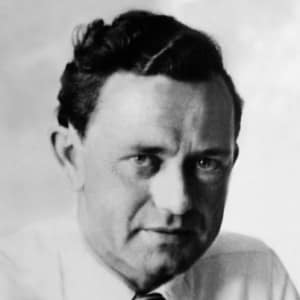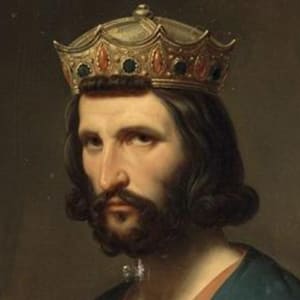
Ferdinand Anton Ernst Porsche
Thanks to the model 356, created in 1948 by Ferdinand Anton Ernst “Ferry” Porsche, the Porsche car company became known worldwide as a producer of successful sports and racing cars. Several years earlier, in 1934, Porsche worked with father Ferdinand Porsche on the first designs of the Volkswagen car.
Synopsis
Born on September 19, 1909 in Wiener Neustadt, Austria, Ferdinand Anton Ernst "Ferry" Porsche was is the second child born to Ferdinand and Aloisia Johanna (Kaes) Porsche. After working with his father, Ferdinand Porsche, to develop the first designs of the Volkswagen car in 1934, Porsche married Dorothea Reitz. They had four sons, Ferdinand "Butzi", Gerhard, Peter and Wolfgang. In 1948, Porsche completed his first car by hand, the model 356.
Early Life
Ferdinand Anton Ernst "Ferry" Porsche was born on September 19, 1909 in Wiener Neustadt, Austria. He is the second child born to Ferdinand and Aloisia Johanna (Kaes) Porsche (his sister, Louise, was born in 1904).
Porsche's father worked for several years as a technical director at the Austro-Daimler automobile company, which later became Daimler-Benz and manufactured the Mercedes-Benz; and designed the Lohner-Porsche Chaise, powered by four electric motors, in 1900. In 1910, when Porsche was just a year old, his father designed a car that traveled 85 miles per hour. In 1920, his father gave him for Christmas a small two-seater that he designed and built. It ran on a 3.5 horsepower, two-cylinder engine.
Porsche, inevitably, grew up with an innate love of cars. He began helping out with his father's business as soon as it opened and, together, they developed the Auto Union grand prix car, which had a lightweight design and 16-cylinder engine. Porsche liked to test drive this machine, but his father soon nixed his runs, fearing for his safety. At the age of 12, Porsche had witnessed a fatal car crash during a race, and while everyone else shielded their eyes from the carnage, he was engrossed in the wreck—not out of a macabre sense, but to analyze the cause of the tragic accident. Later investigation showed that his original assessment was correct; a tire wheel had collapsed. Porsche's scientific curiosity would translate to a successful future in building automobiles.
WWII Controversy
One of Porsche's greatest claims to fame was his involvement on the prototype Volkswagen, meaning "people's car" in German. The first model had its debut run in 1936, two years after Porsche and his father had first developed plans for the vehicle. Porsche's father had been recruited to build the car by German Chancellor Adolf Hitler, who wanted an affordable automobile to be available for the working class. In a savvy business move, Porsche made certain that he and his father would receive a portion of the profits for every car sold. Soon after, the VW "Beetle," so called for its small size and rounded body style, debuted as the "people's car" and eventually became the world's most popular car. The first VW plant was built in 1938. While working on the "people's car" project, in 1935, Porsche married Dorothea Reitz. They had four sons, Ferdinand "Butzi", Gerhard, Peter and Wolfgang.
Under the Nazi regime, the Porsches' firm flourished, as they manufactured military vehicles, airplane engines and tanks. Later, like most businesspeople who had dealings with the Third Reich, Porsche stated that he had no way to refuse Hitler's wishes. During this time, the factory operated with what Porsche would later recall as 15,000 to 20,000 Russian employees, although he did not point out that these were prisoners of war who were providing slave labor.
After World War II, the French threw Porsche's father in prison until 1947, but neither he nor his son stood trial for war crimes. Instead, as The New York Times reported, "The real reason for their arrest seems to have been an attempt to force them to collaborate with the French auto industry." In any case, the Porsche factory moved in 1944 from the rubble of Stuttgart to Gmund, Austria, where Porsche decided to create a new sports car. Because the new German government had canceled their contract to produce cars, Porsche pursued plans for the vehicle that he had initiated back in 1939. It was based on the light, compact model of the VW, with an aluminum body and a four-cylinder and 1131cc engine.
Later Years and Death
In the 1970s, critics berated the less costly, fuel-conscious Porsche 924 developed for the oil-deprived decade, but the firm rebounded and had its peak year in 1986, selling close to 50,000 cars.
After the American stock exchange crash in 1987, sales fell, but a decade later, sales were up and the product line featured a cheaper, retro-style Porsche similar to the originals, called the Boxster. Much of this success was credited to engineer Wendelin Wiedeking, who took over as Porsche chairman after decades of family feuding and scandals, in addition to the financial crises that were weathered.
Colleagues often described the short and stocky Ferry Porsche as a soft-spoken and modest man. Porsche retired from his company in 1993 and died five years later, on March 27, 1998. He was survived by sons Butzi, Gerhard, Peter and Wolfgang. Porsche was buried beside his parents, Ferdinand and Aloisia Porsche, as well as his wife Dorothea, in Zell am See, Austria.



